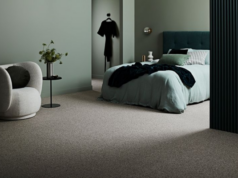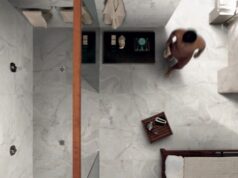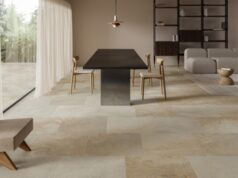
Linoleum (or lino for short) is a popular floor covering, thanks mostly to its excellent durability and affordable cost.

Among the less expensive flooring options are vinyl and linoleum. They are versatile, flexible and water resistant, three features that see them widely used in homes across Australia. The ease of application and variety of patterns available mean that you have plenty of choice in colour and pattern. Also, you’re not tied to a floor covering for the life of the property so if you feel like a change, it is easy to manage. They are often printed to give the appearance of other floor coverings such as hardwood or ceramic tile.
Linoleum is made from linseed oil and formed into rolls or tiles which are colour dyed all the way through. Linoleum won’t burn like vinyl does, and is the harder wearing of the two materials. It is also hypo-allergenic and antimicrobial, making it perfect for use in areas you need to keep hygienic.
Vinyl is really polyvinyl chloride (PVC) rolled into sheets, and has the designs printed directly to the surface. It is less durable than lino and is susceptible to accidental flame damage, but is cheaper to produce.
These flooring types feel soft underfoot when compared to other water resistant flooring types such as tiles. They also retain warmth well and don’t carry acoustics far.
What should I look for?
Beyond the basic style, choosing quality vinyl or linoleum usually comes down to the thickness of the product. Thicker tiles and rolls will resist scuffs and scrapes better and the colour will last a lot longer. Surface sprayed patterns will wear off quickly with a lot of foot traffic.
How is vinyl or linoleum flooring installed?
The area is measured, cleaned and levelled. Then, the rolls of vinyl or linoleum are rolled out into the room, making sure that patterns match where pieces meet, then rolled back from the edges. Craft paper is run along the walls with double sided tape on top. This forms a template to cut along; the vinyl is rolled back to the wall and pressed firmly on the paper, then rolled back again to reveal where to cut. Once the roll has been trimmed to size, the adhesive is troweled around the walls about six inches thick and the vinyl is rolled out and pressed firmly to it. After 24 hours, the surface should be ready to walk on.
Linoleum floor tiles are installed similarly to ceramic tiles. The floor is measured and chalked, and small areas of adhesive are trowelled on to which the floor tiles are mounted. Some tiles will have a self-adhesive backing. Because linoleum tiles have more flexibility they can be placed closer together, eliminating the need for grout.
Suitability and maintenance
Because they’re waterproof and have some bounce, vinyl and linoleum make great choices for kitchens and bathrooms. They resist stains and are more forgiving of falls, which also makes them good candidates for flooring in a rumpus room. Their heat retention and cushioned feel can’t be matched by tiles and they don’t require polishing like wood floors.
These floors are amongst the easiest to clean, a simple mop is recommended, bleaches and abrasives are discouraged. It’s best not to let water sit on a linoleum tiled floor; while the tile itself is waterproof, water can seep into the joints to the floor beneath and cause rot.
|
Advantages
|
Disadvantages
|





